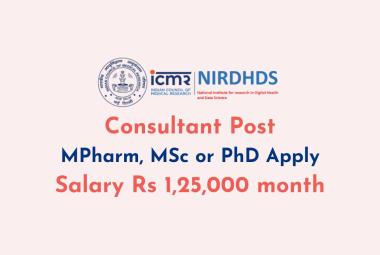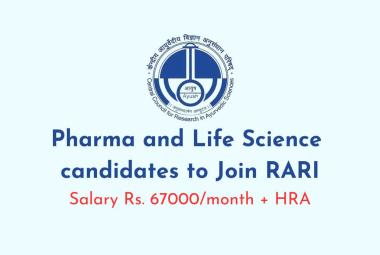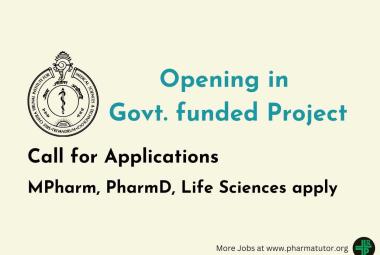{ DOWNLOAD AS PDF }
ABOUT AUTHORS:
Manisha Gahlyan*, Saroj Jain
Hindu college of pharmacy
Near Panchayat Bhawan, Gohana Road, Sonepat, Haryana
manishagahlyan@gmail.com
ABSTRACT:
Oral route has been the most popular and successfully route for controlled delivery of drugs because of the flexibility in the designing of dosage form than other routes. The immediate release conventional dosage form lack in the efficiency of controlling the proper plasma drug concentration. This factor as well as factors such as repetitive dosing and unpredictable absorption leads to the concept of oral controlled release drug delivery systems. A desirable characteristic of controlled release delivery system is that the duration of drug action should be dictated by the design property of drug molecules. There are different mechanistic aspects for design of oral controlled release drug delivery systems such as matrix, reservoir, osmotic pressure, ion exchange resins, altered density etc. This article contains brief review on currently existing oral controlled system and various formulation approaches for the controlled release system.
INTRODUCTION
Controlled release dosage form is a dosage form that release one or more drugs continuously in predetermined pattern for a fixed period of time, either systemically or locally to specified target organ. Greater attention is paid on development of oral controlled release drug delivery systems due to flexibility in designing of dosage form. The main challenges to oral drug delivery systems are to deliver a drug at therapeutically effective rate to desirable site, modulation of GI transit time and minimization of first pass elimination. Control release dosage form provides better maintenance of optimal and effective drug level for prolonged duration with less dosing frequency and side effects1, 2. The modified release oral drug delivery systems classified as are:
* Controlled release-
- Sustained release
- Extended release
- Prolonged release
* Delayed release
CONTROLLED RELEASE DRUG DELIVERY SYSTEM2
The basic rationale of a controlled release drug delivery system is to optimize the biopharmaceutics, pharmacokinetics, and pharmacodynamics properties of a drug in such a way that its utility is maximized through reduction in side effects and cure or control of disease condition in the shortest possible time by using smallest quantity of drug, administered by most suitable route. The immediate release drug delivery system lacks some features like dose maintenance, controlled release rate and site targeting. An ideal drug delivery system should deliver the drug at a rate dictated by the need of body over a specified period of treatment.
A controlled release drug delivery system is capable of achieving the following benefits over conventional dosage forms4:
· Total dose is low.
· Reduced GI side effects and other toxic effects.
· Reduced dosing frequency.
· Better patient acceptance and compliance.
· Less fluctuation in plasma drug levels.
· More uniform drug effect.
· Better stability of drug.
Factor Influencing the Formulation of Oral Controlled Release Drug Delivery System 2, 3, 5,13
Physicochemical Factors
Solubility
Low aqueous solubility drugs have low oral bioavailability5. Drugs having good solubility in stomach are poor choice for controlled/sustained oral dosage forms. The water solubility limits the loading efficiency of drug into a variety of carrier systems such as liposome and micro particles, where highly water-soluble drug tend to leach fast from the carrier. The pH dependent solubility particularly in the physiological pH rangewould be another problem for controlled release formulation because of the variation in pH throughout the gastrointestinal tract and variation in the dissolution rate. The biopharmaceutical classification system allow to estimate contribution of three major factors Solubility, Dissolution and Intestinal Permeability which affect oral absorption.
Class III (High solubility-Low permeability) and Class IV (Low solubility-Low permeability) drugs is poor candidate for controlled release dosage form.
Drug Stability
A drug in a solid state undergoes degradation at a much slower rate than a drug in suspension or solution6,7. Drugs that are unstable in gastric pH can be developed as slow release dosage form and the drugs can be delayed till the dosage form reaches the intestine. Drugs that undergo gut-wall metabolism and show instability in small intestine are not suitable for oral controlled drug delivery systems.
Molecular Size and Diffusivity5, 8, 9, 10
Diffusivity defined as the ability of a drug to diffuse through membrane, is inversely related to molecular size. Diffusivity depends on size and shape of the cavities of the membrane. More than 95% of drugs are absorbed by passive diffusion. The upper limit of drug molecular size for passive diffusion is 600 Dalton. The examples of the drugs which are difficult to control release rate of medicament from dosage form are proteins and peptides.
Partition coefficients9, 10
Partition coefficient id defined as the fraction of drug in an oil phase to that of an aqueous phase.
It governs the permeation of drug particles through biological membrane. Drugs with high partition coefficient value easily permeate through biological membrane. The diffusion of drug molecules across rate controlling membrane or through the matrix system essentially relies on partition coefficient. Drugs that have lower partition coefficient are not suitable for oral controlled release drug delivery system and drugs that have higher partition coefficient are also not suitable for oral controlled drug delivery system because they will not partition out of the lipid membrane once it gets in the membrane.
Drug pKa and ionization at physiological pH5, 11
Drugs existing largely in ionized form are poor candidate for oral controlled release drug delivery system because absorption rate of ionized drug is 3-4 times less than that of unionized form. The pKa range for acidic drug whose ionization is pH sensitive is around 3.0-7.5 and for basic drug whose ionization is pH sensitive is around 7.0-11.0 are ideal for optimum positive absorption.
Biological factors
Absorption1, 4
The aim of formulating controlled release product is to place a control on delivery system. The desirable quality of oral controlled delivery system is that it should release complete drug and the release drug should be completely absorbed. The fraction of drug absorbed from the system can be lower than the expected due to degradation of drug, protein binding, site-specific, dose-dependent absorption, poor water solubility and small partition coefficient.
Distribution1, 4, 11
Drugs with high apparent volume of distribution, which influence the rate of elimination of drug, are poor candidate for oral drug delivery system. The apparent volume of distribution is one of the important parameter of drugs that describes the magnitude of distribution as well as protein binding within the body. The distribution of drug can be determined by the volume of distribution at steady state and T/P ratio.
T/P=K12/ (K21-b)
T=Amount of drug in peripheral compartment, P=Amount of drug in central compartment, K12=Constant for distribution of drug from central to peripheral compartment, K21=Constant for distribution of drug from peripheral to central compartment, b=Slow disposition constant.
Metabolism4, 12
Metabolism of a drug is either an inactivation, of an active drug or conversion of an inactive drug to an active metabolite. There are two factors related to metabolism of drug which restrict the design of sustained/controlled drug delivery.
For chronic administration, drugs that are capable of either inducing or inhibiting enzyme synthesis, they are poor candidates for controlled delivery systems due to difficulty in maintaining uniform blood levels.
Drugs possessing variations in bioavailability due to first-pass effect or intestinal metabolism are not suitable for sustained/controlled drug delivery.
Half- life4, 5
The duration of action is dependent on the biological half- life. Drugs with short half-life (greater than 2 hrs) are most suitable for controlled drug delivery system. Factors influencing the half-life of a drug are elimination, metabolism, and distribution.
Therapeutic index5
Margin of safety can be described by considering therapeutics index, which is the ratio of median toxic dose and median effective dose. Therapeutic index = TD50/ED50. Drugs with low therapeutics index are unsuitable for drug incorporation in controlled release formulation.The side effects can be minimized by controlling the concentration within therapeutic range.
Size of dose5
If the dose of a drug in conventional dosage form is high, then it is less suitable candidate for CRDDS. This is because the size of a unit dose controlled release oral formulation would become too big to administer without difficulty.
Absorption window5, 11
Certain drugs when administered orally are absorbed only from a specific part of GI tract. This part is known as ‘absorption window’. These kinds of drugs are not suitable for CRDDS.
Plasma concentration response relationship1, 5, 11, 12
Plasma drug concentration is more responsible for pharmacological response than dose. But the drugs having pharmacological activity independent of plasma concentration are poor candidate for oral CR drug delivery system.

Concentration dependency on transfer of drug
If transfer of drug from one compartment to other follows zero order kinetic process then such drugs are poor candidate for oral CR delivery system1, 13. It should be first order kinetics. The following figure represents various formulation strategies for oral CR drug delivery system.
MECHANISTIC ASPECTS FOR ORAL CONTROLLED RELEASE DRUG DELIVERY FORMULATION
Dissolution controlled release8. 14
Dissolution is defined as solid substance solubilized in a given solvent. It is a rate determining step when liquid is diffusing from solid. Several theories explain dissolution: Diffusion layer theory, Surface renewal theory, Limited solvation theory.
Noyes Whitney Equation
dc/dt = kD.A (Cs – C)
dc/dt = D/h A. (Cs – C)
dc/dt = Dissolution rate, k= Dissolution rate constant (1st order), D = Diffusion coefficient/diffusivity, Cs = Saturation/ maximum drug solubility, C =Conc. Of drug in bulk solution, Cs-C=concentration gradient, h =Thickness of diffusion layer.
Two common formulation system rely on dissolution to determine release rate of drugs are:
(i) Encapsulated dissolution system (ii) Matrix dissolution system
Encapsulated dissolution system8, 15
This is also known as Coating dissolution controlled system. Dissolution rate of coat depends upon stability & thickness of coating. It masks color, odor, taste and minimize GI irritation. Controlled release products by decreasing the dissolution rate of drugs which are highly water soluble can be formulated by preparing appropriate salt or derivatives, by coating the drug with a slowly dissolving material, or by incorporating the drug into a slowly dissolving carrier. Examples:Ornade spansules, Chlortrimeto Repetabs.

Matrix dissolution system15, 16
It is also known as monolithic dissolution controlled system. In this dissolution IS controlled by: Altering porosity of tablet, decreasing its wet ability, dissolving at slower rate. It follows first order drug release. The drug release can be determined by dissolution rate of polymer. Examples: Demeaned extencaps, Dimetapp extentabs.

Diffusion controlled system
It is a major process for absorption in which no energy required.In this drug molecules diffuse from a region of higher concentration to lower concentration until equilibrium is attained and it is directly proportional to the concentration gradient across the membrane. In this system release rate is determined by its diffusion through a water-insoluble polymer. There are two types of diffusion devices:
(i) Reservoir diffusion system
(ii) Matrix diffusion system
Reservoir diffusion system17, 18
It is also called as laminated matrix device. It is a hollow system containing an inner core surrounded by water insoluble membrane and polymer can be applied by coating or micro encapsulation. The Rate controlling mechanism is that drug will partition into membrane and exchange with the fluid surrounding the drug by diffusion. Commonly used polymers are HPC, ethyl cellulose & polyvinyl acetate. Examples: Nico-400, Nitro-Bid.

Rate controlling steps: Polymeric content in coating, thickness of coating, hardness of microcapsule.

Matrix dissolution system16
(a) Rigid Matrix Diffusion: Materials used are insoluble plastics such as PVP & fatty acids.
(b) Swellable Matrix Diffusion: it is also called as Glassy hydro gels and popular for sustaining the release of highly water soluble drugs. Materials used are hydrophilic gums19. Examples:
Natural- Guar gum, Tragacanth.
Semi synthetic -HPMC, CMC, Xanthum gum.
Synthetic -Polyacrilamides.
Examples: Glucotrol XL, Procardia XL
The Higuchi Equation describing the drug release from this system1
: Q = [Dε/T (2A-ε Cs.t)]1/2 Where Q=amt of drug release per unit surface area at time t,
D=diffusion coefficient of drug in the release medium,
ε=porosity of the matrix,
Cs=solubility of drug in release medium,
T=tortuosity of matrix,
A=concentration of drug present in matrix per unit volume.
Rate controlling step: Diffusion of dissolved drug in matrix.


Dissolution & Diffusion Controlled Release system20
In this drug is encased in a partially soluble membrane and pores are created due to dissolution of parts of membrane.It permits entry of aqueous medium into core & drug is dissolved or diffused out of the system. Ex- Ethyl cellulose & PVP mixture dissolves in water & creates pores of insoluble ethyl cellulose

Ion exchange resins controlled release system21, 22, 23
Ion exchange resins are cross-linked water-insoluble polymers carrying ionizable functional groups. These resins are used for taste masking and controlled release system. The formulations are developed by embedding the drug molecules in the ion-exchange resin matrix and this core is then coated with a semi permeable coating material such as Ethyl Cellulose. This system reduced the degradation of drug in GIT. The most widely used and safe ion-exchange resin is divinylbenzene sulphonate. In tablet formulations ion-exchange resins have been used as disintegrant.
Osmotically controlled release system24, 25, 26, 27
Osmosis is defined as the movement of solvent from lower to higher concentration through semi permeable membrane.Osmotic pressure is the hydrostatic pressure produced by a solution in a space divided by a semi permeable membrane due to difference in concentration of solutes. This technology provides zero order release used for hydrophilic drugs. Drug may be osmotically active, or combined with an osmotically active salt (e.g., NaCl). Semi permeable membrane is usually made from cellulose acetate. Examples: Glucotrol XL, Procardia XL.
The volume flow of water into core reservoir dv/dt is expressed as:
dv/dt = K A/ h (Δπ-Δp)
K, A & h= Membrane permeability, effective surface, area & thickness of semi permeable membrane, Δπ= osmotic pressure difference, Δp= hydrostatic pressure difference.

pH independent formulation4, 5, 28
Most drugs are either weak acids or weak bases. The release from controlled release formulation is pH dependent. However buffers such as salts of amino acids, citric acid, phthalic acid phosphoric acid or tartaric acid can be added to formulation to maintain a constant pH thereby rendering pH independent drug release. A buffered formulation is prepared by mixing a basic or acidic drug with appropriate pharmaceutical excipient and coating with GI fluid permeable film forming polymer. When GI fluid permeates through the membrane, the buffering agents adjust the fluid inside to suitable constant pH thereby rendering a constant rate of drug release.
Altered density formulation29, 30
Several approaches have been developed to prolong the residence time of drug delivery system in the GI tract. One such approach is the bioadhesion approach which is based on the adherence of bioadhesive polymer to mucin/epithelial surface of GI tract. The other approach is to alter the formulation’s density by using either high or low density pellets.
(I)High density approach: in this density of pellets must exceed that of normal stomach content and should therefore be at least 1.4g/cm3 . In preparing such formulations, drugs can be coated on heavy core or mixed with heavy inert materials such as barium sulphate, titaniumdioxide, iron powder and zinc oxide. The weighted pellets can be covered with a diffusional controlled membrane.
(II)Low density approach: in this apparent density lower than that of gastric fluid can be used as a carrier of drug for controlled release purposes. Polystyrol, pop rice and even popcorn are all candidate as carrier. The surface of these empty shells is undercoated with sugar or a polymeric material such as meth acrylic polymer and cellulose acetate phthalate. The undercoated shell is then coated by a mixture of drug with polymers such as ethyl cellulose and hydroxypropyl cellulose. The final product floats on gastric fluid for a prolonged period, while slowly releasing drug.
TABLE 1: Marketed drug products with their mechanism based classification
|
S.No. |
Technology |
Brand name |
Drug |
Manufacturer |
|
|
1. |
Diffusion controlled system |
Welbutrin XL |
Bupropion |
GlaxoSmithKline |
|
|
2. |
Matrix system tablet |
Ambien CR |
Zolpidem tartarate |
Sanofi-Aventis |
|
|
3. |
Method using ion exchange resin |
Tussionex Pennkinetics ER suspension |
Hydrocodon Polistirex and Chlorpheneramine Polistirex |
UCB Inc. |
|
|
4. |
Methods using osmotic pressure |
Elementary osmotic pump |
Efidac 24@ |
Chlorpheneramine Maleate |
Novartis |
|
Push-pull osmotic system |
Glucotrol XL@ |
Glipizide |
Pfizer Inc. |
||
|
5. |
pH independent formulation |
Inderal@ LA |
Propranolol HCL |
Wyeth Inc. |
|
|
6. |
Altered density formulation |
Modapar |
Levodopa and Benserazide |
Roche Products, USA |
|
CONCLUSION
Nowadays modern technologies including target concept have emerged for successful oral controlled delivery. Oral controlled release products provide advantages over conventional dosage form by optimizing bio-pharmaceutics, pharmacokinetics and pharmacodynamics properties of drug in such a way that it reduces dosing frequency to an extent that once daily dose is sufficient for therapeutic management through uniform plasma concentration provide maximum utility of drug.
From the above discussion it is concluded that the oral controlled release drug delivery system has been commonly adopted and most convenient route for drug delivery.
REFERENCES
1.Brahmankar DM, Jaiswal SB. Biopharmaceutics and Pharmacokinetics: Pharmacokinetics. 2nd ed. Vallabh Prakashan, Delhi: 2009; 399-401.
2.John C, Morten C, The Science of Dosage Form Design, Aulton: Modified release peroral dosage forms. 2nd ed. Churchill Livingstone. 2002; 290-300.
3.Lee VHL. Controlled Drug Delivery Fundamentals and Applications: Influence of drug properties on design. 2nd ed. Marcel Dekker, Inc. New York: 1987; 16-25.
4.Modi Kushal, Modi Monali, Mishra Durgavati, Panchal Mittal, Sorathiya Umesh, Shelat Pragna. Oral controlled release drug delivery system: An overview. Int. Res. J. Pharm. 2013; 4(3):70-76.
5.Vyas SP, Khar RK. Controlled drug delivery: Concepts and Advances. 1st ed. Vallabh prakashan; 2002; 156-189.
6.Y.W. Chien. Novel drug delivery system. Volume 50.
7.Allen LV, Popvich GN, Ansel HC. Ansel’s Pharmaceutical dosage form and drug delivery system. 8th ed. 2004; 260-263.
8.Patrick JS. Martin’s Physical Pharmacy and Pharmaceutical Sciences. 3rd ed. Varghese Publishing House. Bombay: 1991; 512-519.
9.Kar RK, Mohapatra S, Barik BB. Design and characterization of controlled release matrix tablets of Zidovudin. Asian J Pharm Cli Res. 2009; 2:54-6
10.Lachaman L, Liberman HA, Kanig JL.The theory and practice of industrial pharmacy. 3rd ed. Bombay: Varghese publishing house 1987.
11.Jain NK. Controlled and novel drug delivery. CBS publisher and distribution. 1997; 1-25.
12.Venkataraman DSN, Chester A, Kliener L. An overview of controlled release system. Handbook of pharmaceutical controlled release technology. Marcel Dekker Inc. 2000; 1-30.
13.Mamidala R, Ramana V, Lingam M, Gannu R, Rao MY. Review article factors influencing the design and performance of oral sustained/controlled release dosage form. Int. journal of pharmaceutical science and nanotechnology. 2009; 2:583.
14.Gupta S, Singh RP, Sharma R, Kalyanwat R, Lokwani P. Osmotic pumps: A review. Int. journal of comprehensive pharmacy. 2011; 6:1-8.
15.Robinson JR, Lee VH. Controlled drug delivery. 2nd ed. Marcel Dekker, 1987; 4-15.
16. Kamboj S, Gupta GD. Matrix Tablets: An important tool for oral controlled release dosage form. Pharmainfo. Net. 2009; 7:1-9.
17.Bechgaard H, Nielson GH. Controlled release multiple units and single unit dosage. Drug Dev.and Ind. Pharm. 1978; 4:53-67. dx.doi.org/10.3109/03639047809055639
18.Wise DL. Handbook of pharmaceutical controlled release technology. Marcel Dekker Inc. New York: 2002; 432-460.
19.Tripathi KD. Essentials of Medical pharmacology. 5th ed. New Delhi: Jaypee Brothers Medical Publishers (P) Ltd; 2003.
20.Gibaldi M. Biopharmaceutics and clinical pharmacokinetics. 3rd ed. Philadelphia: Lea & Febiger; 1984.
21.Heilmann K. Therapeutics systems rate controlled drug delivery: Concept and Development. 2nd ed. Stuttgart Georg Thieme Verlag; 1984.
22.Conaghey OM, Corish J, Corrigan OI. Iontophoretically assisted in vitro membrane transport of nicotine from a hydrogel containing ion exchange resin. Int.J. Pharm. 1998; 170-225. dx.doi.org/10.1016/s0378-5173(98)00144-6
23.Mahore JG, Wadher J, Umekar MJ, Bhoyar PK. Ion exchange resins: Pharmaceutical application and recent advancement. Int. J. Pharm.Sci. Rev. Res. 2010; 1(2): 8-13.
24.Javed Ali, RK Khar, Alka Ahuja. Dosage form design. 4th ed. Birla Publication Pvt. Ltd; 2009; 181-194.
25.Cristina M, Aranzazu Z, Jose ML. Review: Critical factors in the release of drugs from sustained release hydrophilic matrices. Int. journal of Research in Ayurveda and Pharmacy. 2011; 21: 1701-08.
26.Herbig SM, Cardial JR, Korsmeyer RW, Smith KL. Asymmetric membrane tablet coating for osmotic drug delivery. J. Control. Release. 1995; 35:127-136. dx.doi.org/10.1016/0168-3659(95)00028-7
27.Gupta RN, Gupta R, Basniwal PK, Rathore GS. Osmotically controlled oral drug delivery systems; A Review. Int. J. Pharm. Sci. 2009: 1(2): 75-269.
28.Wagnaer JG. Biopharmaceutics and pharmacokinetics. Org. Intelligence Publisher; 1971: 57-148.
29.Srikanth MV,Sunil SA, Rao NS, Uhumwangho MU, Ramana Murthy KV. Ion exchange resins as controlled drug delivery carriers. J. Sci. Res. 2010; 2(3): 11-597.
30.Ballard BE. Sustained and controlled release drug delivery system. USA: Marcel Dekker Inc. 1978; 76-106.
REFERENCE ID: PHARMATUTOR-ART-2217
|
PharmaTutor (ISSN: 2347 - 7881) Volume 2, Issue 8 Received On: 29/05/2014; Accepted On: 03/06/2014; Published On: 01/08/2014How to cite this article: M Gahlyan, S Jain; Oral Controlled Release Drug Delivery System- A Review; PharmaTutor; 2014; 2(8); 170-178 |
NOW YOU CAN ALSO PUBLISH YOUR ARTICLE ONLINE.
SUBMIT YOUR ARTICLE/PROJECT AT articles@pharmatutor.org
Subscribe to Pharmatutor Alerts by Email
FIND OUT MORE ARTICLES AT OUR DATABASE









